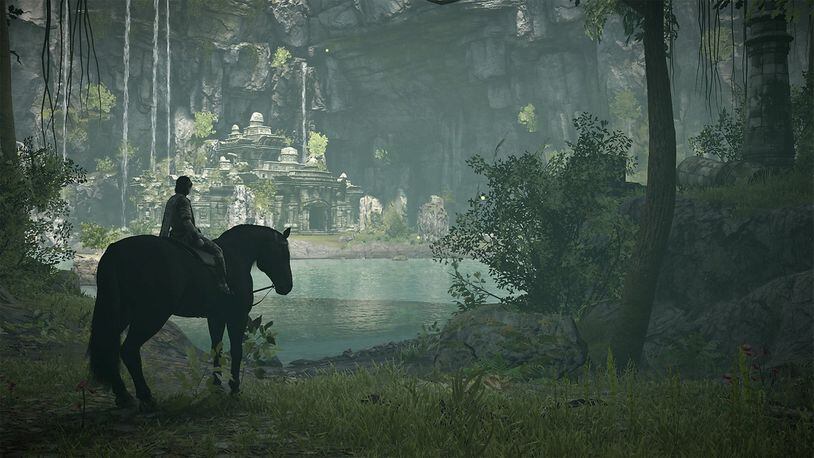At the opposite end of the spectrum, developers who change the work too much could create something far from the original. It becomes a whole new game and not the classic experience that fans remember and newcomers seek.
The remake of the “Shadow of the Colossus” falls somewhere in between. Bluepoint Games designed what seems like a restrained facsimile of the 2005 classic. It still follows the adventures of Wander, a lone hero who comes to a forbidden land with the body of a maiden named Mono. He has heard of a being named Dormin who can revive the dead.
Wander locates the entity and makes a deal to defeat 16 colossus that roam the land, but it’s an agreement filled with peril, leading to a haunting finale.
When “Shadow of the Colossus” was first released, it was an instant masterpiece. Designer Fumito Ueda threw convention out the window. Whereas similar adventures had multiple characters and dungeons to explore, “Shadow of the Colossus” was noted for the astonishing scale of its battles and the serene solitude of its landscape.
Wander’s only companion is his horse Agro and the two searched vistas of rolling hills, deserts, lakes, forests and cliffs for his targets. All players had to do was raise Wander’s Ancient Sword in the light and a beam would pinpoint the direction of the colossus.
Traveling to the behemoths is one part of the battle; the other half is defeating them. Ueda upended common thinking on boss battles and dungeons by making the two one and the same. Defeating a colossus involved finding a weakness in the enemy and discovering a way to stab it with his Ancient Sword.
Bluepoint Games keeps this process intact but takes advantage of the technology to create environments that look more lifelike. Light filters through the forest branches. The fur, which are key handholds on colossi, shift with more realism as the creatures swing a sword or fly through the air. This is a key upgrade because the visuals of 2005 aren’t as impressive in 2018, and to re-create that sense of awe, the team had to handcraft and reproduce Ueda’s world with more fidelity.
That practice also allowed Bluepoint Games to put more of its interpretation in the game. The increased detail with 4K resolution and high dynamic range lets them show the evolution of Wander through each battle. The effects are subtle but how they reveal this change and other elements is part of how the “Shadow of the Colossus” remake feels new even to those who played it in the past.
Aside from the visuals, the controls get a few tweaks. Aiming the bow is easier and mounting Agro is simpler. Both of those changes make some boss fights less frustrating, but the controls still take time to master. Even the customizable heads-up display helps with the practical part of the experience.
The best new feature of “Shadow of the Colossus” has to be the Photo Mode that the team implemented. Like the “Uncharted 4” and “Horizon Zero Dawn” feature, this allows players to pause the game and move the camera during a beautiful scene or epic moment. They can add filters a la Instagram or tweak the depth of field. From there, they can share it with friends via social media.
The pictures are stunning and it adds a creative element that the original lacked. Players can be the painters and use the Bluepoint Games’ remake as their canvas. It’s a clever way to show off the artistry that lies at the very heart of this classic.
‘SHADOW OF THE COLOSSUS’
Four Stars
Platform: PlayStation 4
Rating: Teen
About the Author
